All issues

Volume 13 (1978)
- Issue 6 Pages 287-
- Issue 5 Pages 235-
- Issue 4 Pages 187-
- Issue 3 Pages 111-
- Issue 2 Pages 53-
- Issue 1 Pages 1-
Volume 13, Issue 5
Displaying 1-5 of 5 articles from this issue
- |<
- <
- 1
- >
- >|
-
Haruyuki FUJINO1978Volume 13Issue 5 Pages 235-242
Published: October 30, 1978
Released on J-STAGE: February 26, 2010
JOURNAL FREE ACCESSElectrical ship propulsion is not a new concept. Its history began at 1912, when the collier “Jupiter” installed with reciprocating engine and dc machines was built. Although many ships with electrical propulsion system known as T-2 tankers were built during World War II, only ships requiring excellent maneuverability, e. g. icebreaker and research vessel, adopt electrical propulsion system recently. This situation is caused by the disadvantages in volume, weight and cost of electrical propulsion, However, electrical propulsion has many advantages in addition to excellent maneuverability which fit in modernization of ship.
Technologies in every fields are progressing always. It is meaningful, therefore, to reevaluate the ship propulsion system, taking ac count of new technologies and/or improved technologies.
This paper gives historical reviews of electrical propulsion and modernization of ship at first. The features of several kinds of electrical propulsion and the problems encountered in adoption of superconducting machines are described. Some remarks are given about shipboard refrigeration system for superconducting machine. At last, the present status of researches and developments for superconducting ship propulsion, mainly in U.S.A., are reviewed.View full abstractDownload PDF (1094K) -
Teruo KATO, Saburo TAKAMURA1978Volume 13Issue 5 Pages 243-249
Published: October 30, 1978
Released on J-STAGE: February 26, 2010
JOURNAL FREE ACCESSSeveral organic insulators in superconducting magnets for fusion reactors are irradiated in a fission reactor at 5K and their mechanical properties are measured at liquid nitrogen temperature (77K).
After irradiation with fast neutron fluence of 1.7×1017 nvt and γ dose of 4.5×108R, polypropylene is broken into pieces and polycarbonate and Mylar becomes too brittle to permit tensile test. Breaking stress and elongation of Nomex reduce as compared with that of unirradiated specimen. Kapton exhibits only a little decrease in breaking stress after irradiation of fast neutron fluence of 3.3×1017nvt and γ dose of 8.8×108R, and shows the most excellent properties against the irradiation.View full abstractDownload PDF (1096K) -
Hideharu YANAGI, Takaaki TAMURA, Yoneho TABATA1978Volume 13Issue 5 Pages 250-255
Published: October 30, 1978
Released on J-STAGE: February 26, 2010
JOURNAL FREE ACCESSA conventional liquid bath type cryostat connected with a helium refrigerator has been used for the irradiation at very low temperatures in a fast neutron source reactor, YAYOI. In order to start the experiments with the cryostat, it takes 4 to 6 hours to cool down and get ready for irradiation. Furthermore, it was not possible to transfer irradiated samples from the cryostat for irradiation to the other for measurements of electron spin resonance and resistivity, keeping the temperature of liquid helium.
Accordingly a simple and convenient cryostat which is capable of providing a wide range of temperatures from liquid helium to 300K, as well as transferring samples with less complexity had been required. In this paper, the design and fabrication of a simple continuous flow cryostat to meet our requirements mentioned above is reported.
Cooling time and the consumption rate of liquid helium during the operation at 4.2K under an output of the nuclear reactor of 500W are designed to be less than 30 minutes and less than 7 litres/hour, respectively.View full abstractDownload PDF (520K) -
[in Japanese]1978Volume 13Issue 5 Pages 256-271
Published: October 30, 1978
Released on J-STAGE: February 26, 2010
JOURNAL FREE ACCESS -
Keiichi NISHIDA1978Volume 13Issue 5 Pages 272-277
Published: October 30, 1978
Released on J-STAGE: February 26, 2010
JOURNAL FREE ACCESSThis paper outlines the principle and the procedure of the leak test of cryogenic equipments made with the aid of a helium leak detector. The sprey, hood, vacuum chamber (bell jar) and sniffer methods are described.View full abstractDownload PDF (1105K)
- |<
- <
- 1
- >
- >|